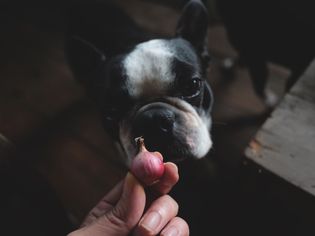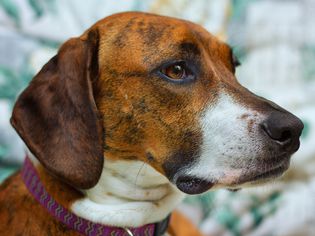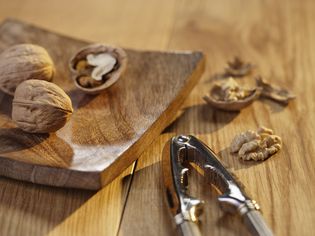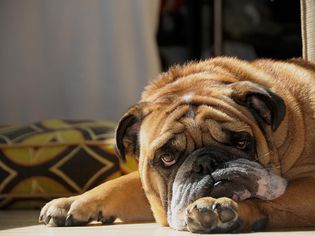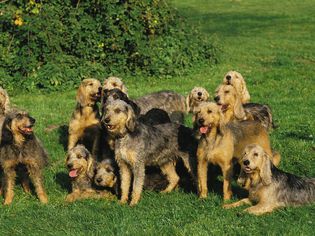The Pembroke Welsh corgi is a small- to medium-sized herding dog of short stature and sturdy build. Known for their low-set body, large erect ears, and stubby tail, the Pembroke also has a reputation for being a wonderful companion. Pembroke Welsh corgis are achondroplastic, a dwarf breed with shortened legs. They are the shortest breed of the herding dog group.
This breed and the Cardigan Welsh corgi are often confused, despite the fact that the two are separate breeds. Pembrokes have slightly smaller builds than Cardigans, their ears are pointier, and they have short stubby tails, as opposed to the long tail of the Cardigan.
Learn more about the Pembroke Welsh corgi’s care needs, characteristics, history, and more.
Breed Overview
GROUP: Herding
HEIGHT: 10 to 12 inches
WEIGHT: 24 to 30 pounds
COAT: Medium-length double coat
COAT COLOR: Black and tan, red, sable, or fawn; typically with white markings
LIFE SPAN: 12 to 13 years
TEMPERAMENT: Friendly, outgoing, playful, protective
HYPOALLERGENIC: No
ORIGIN: Wales
Characteristics of the Pembroke Welsh Corgi
Pembroke Welsh corgis are very intelligent, active, and loyal. Their short legs also give them the ability to sploot (lie on their stomach with their back legs extended out), which is very cute.
They make great pets because of their upbeat personality and their love for their family. Because of their high energy level, though, they need to be able to enjoy plenty of physical activity daily. Otherwise, they could develop problematic behaviors.
These dogs tend to be good with other dogs and cats that are part of their household, especially if they were raised together. However, they can be territorial around other dogs and cats, as the breed was developed to drive off strange dogs around the flocks. This might lead to aggression at the dog park or against animals that enter your yard.
| Affection Level | High |
| Friendliness | High |
| Kid-Friendly | High |
| Pet-Friendly | Medium |
| Exercise Needs | High |
| Playfulness | High |
| Energy Level | Medium |
| Trainability | Medium |
| Intelligence | High |
| Tendency to Bark | Low |
| Amount of Shedding | High |
History of the Pembroke Welsh Corgi
Pembroke Welsh corgis were developed in Wales where they were used as herding, companion, and/or guard dogs. Theories regarding the breed's origin vary among experts, but it is generally believed that the breed dates back to around 1107 A.D.
One theory is that the breed's ancestors were brought to Wales by Flemish weavers. Another theory suggests they may have descended from Swedish vallhund. Either way, they have been part of life in Wales for more than 1,000 years.
There are obvious similarities between Pembroke and Cardigan Welsh corgis, and these breeds were actually crossed in the past. In 1934, the two were officially recognized by the English Kennel Club and the American Kennel Club (AKC) as separate breeds.
Some Pembrokes are born with only a stub of a tail. Traditionally, Pembroke Welsh corgis had their tails docked, as this would show the dog was a working dog and exempt from taxation as a pet dog. Docking is not required for show dogs in the U.K. but the AKC standard says tails should be docked no longer than 2 inches. Docking is illegal in many countries.
You may be familiar with the pet corgis kept by Queen Elizabeth II. She was a Pembroke Welsh corgi owner since her father first gave her one in 1933. They held a special place at Buckingham Palace.
Pembroke Welsh Corgi Care
The Pembroke Welsh corgi has a lot of energy that needs to be released in positive ways through exercise and play. They aren’t difficult when it comes to grooming, but you should spend a lot of time training and socializing these dogs to avoid negative behaviors.
Exercise
Intelligent and hardworking, the Pembroke Welsh corgi excels at herding and most dog sports. This breed requires exercise on a regular basis, which means a minimum of one hour a day.
Also, Pembrokes can be good apartment dogs as long as they get enough exercise and stimulation. However, because of their short legs, they shouldn’t have to hop up and down from high furniture.
Grooming
The Pembroke Welsh corgi has a medium-length topcoat with a short undercoat. The coat can be various colors, such as fawn, red, sable, and black and tan. Also, you might see darker fur over the dog’s shoulders, referred to as “fairy saddle,” thanks to a Welsh legend about the dogs working with elves and fairies.
The breed tends to shed a significant amount, both daily and seasonally in the spring and fall. Routine grooming is essential and mainly consists of hair brushing once or twice a week and as much as daily during shedding seasons. Bathing may help control the shedding.
Be sure to trim your dog's nails regularly to prevent tears and foot problems. Help your dog keep their teeth and gums healthy by brushing teeth daily or at least a couple of times per week. And check and clean their ears often.
Training
Early socialization is good for corgis, as they tend to be naturally reserved around strangers. This trait makes them good watchdogs, but excessive fearfulness needs to be avoided.
The Pembroke Welsh corgi has a tendency to herd by nipping at the ankles, which is a behavior that may make them less ideal for very young children. However, proper training and socialization of the dog, combined with education about dogs for the kids, can make all the difference.
Because the Pembroke craves activities and challenges, training is an absolute must. Start with the basics, then consider training the dog to do a job, such as a watchdog or a herder. If you do want your corgi to serve as a watchdog, though, bear in mind that these dogs have a tendency to bark a lot, but you can train them to reduce unnecessary barking.
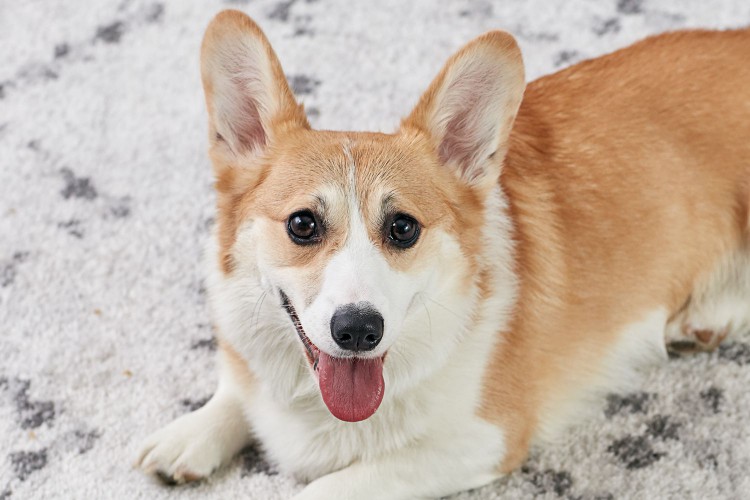
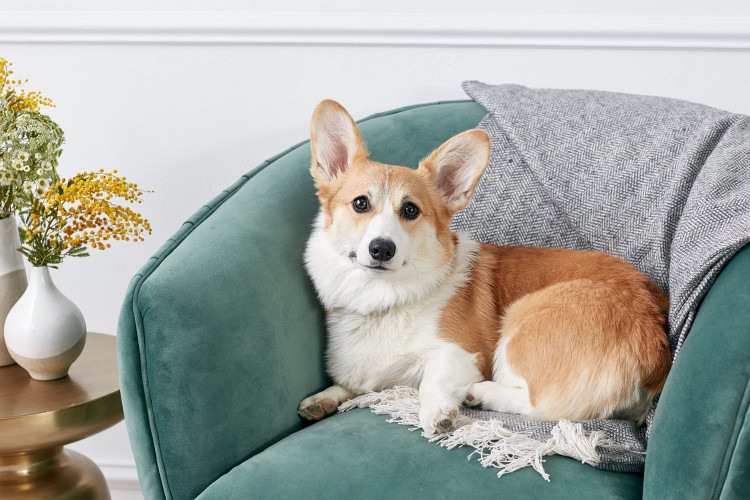
The Spruce / Kevin Norris
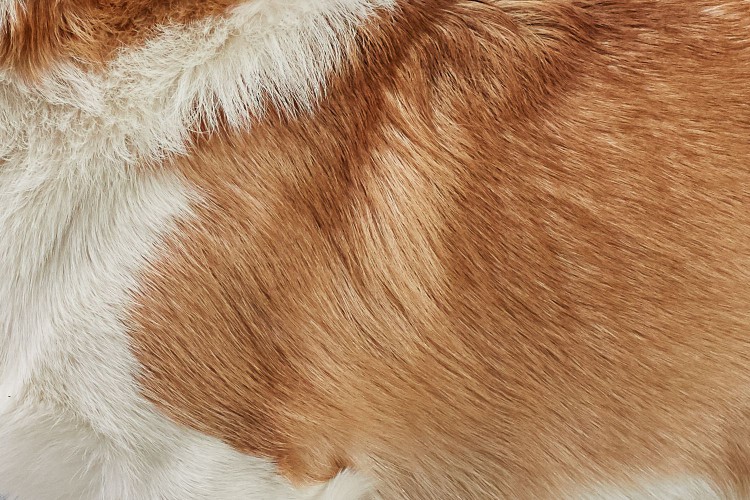
Common Health Problems
Pembroke Welsh corgis that are responsibly bred to the standards set by the AKC are less likely to inherit health conditions. However, there are some conditions to be aware of, such as:
- Hip dysplasia: This orthopedic condition affects the development of the hip joint. Symptoms include hip pain, limping, unusual gait, and exercise intolerance.
- Eye issues: Conditions like cataracts (makes the lens of the eye cloudy), glaucoma (causes high pressure inside the eye), retinal dysplasia (the retina develops abnormally), and progressive retinal atrophy (PRA) (eventually leads to blindness) can impact vision.
- Degenerative myelopathy: This condition causes the white matter of the spinal cord to degenerate. Symptoms include wobbling, inability to walk, easily falling over, and swaying while standing.
- Back issues: Corgis can be affected by back problems, such as intervertebral disc disease (IVDD) that affects the spine and its discs. Help protect your corgi's spinal health, as they won't be able to climb and jump up on furniture as easily as dogs with longer legs. This can result in back strain or fractures. You may want to provide steps and ramps if your dog wants to get up and down from any height.
- Patent ductus arteriosus: This defect causes the ductus arteriosus in the heart to not close when a puppy is born. A veterinarian can diagnose this condition when they hear a heart murmur.
- Von Willebrand disease: This condition impacts the blood’s clotting ability. It can cause excessive bleeding.
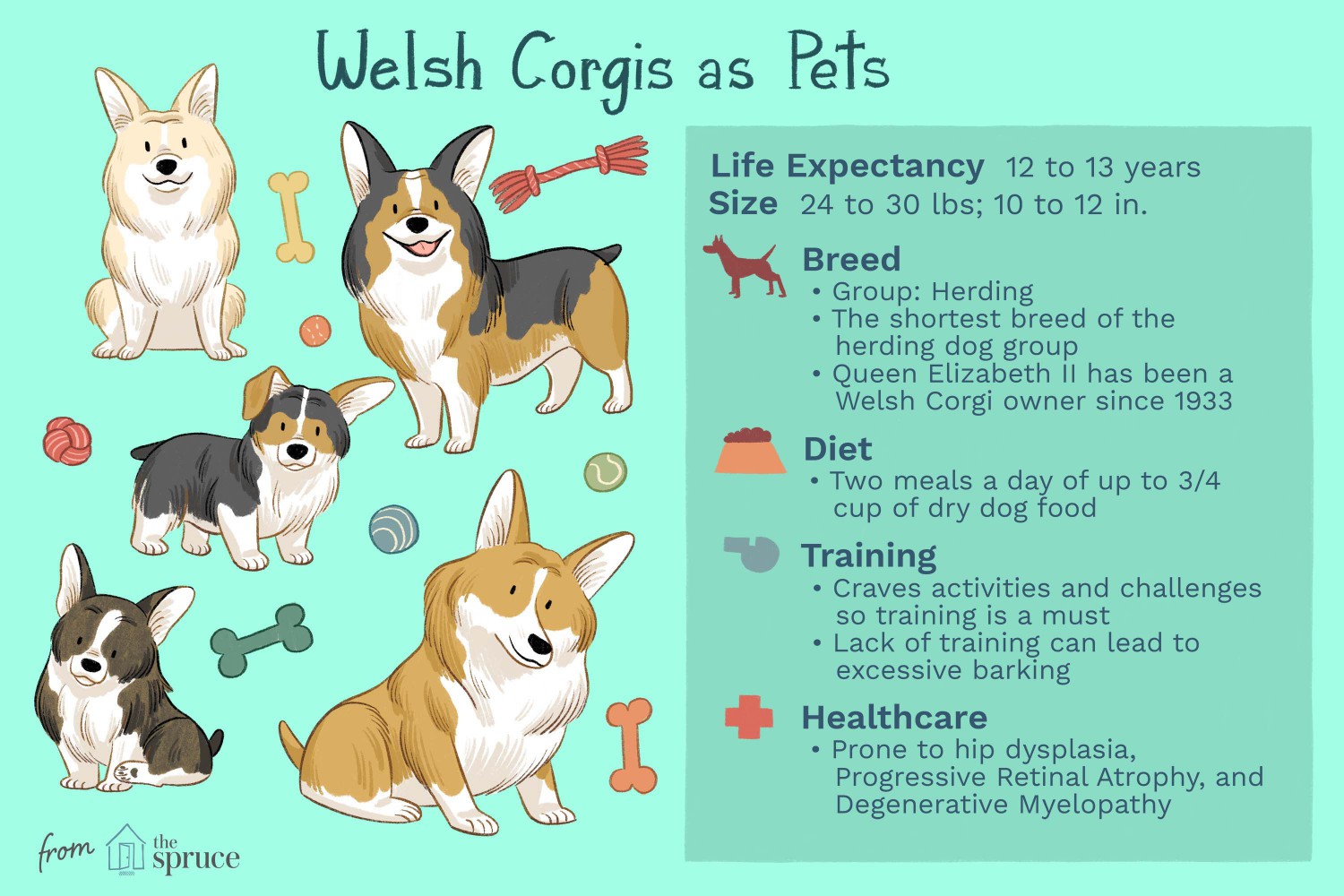
Illustration: The Spruce / Kelly Miller
Diet and Nutrition
Your Pembroke Welsh corgi will need two meals a day. The amount will depend on the dog's size, activity level, age, and other factors, but these dogs might eat, on average, up to 2 cups of food per day, split into at least two feedings.
It's best not to leave food out for free-feeding throughout the day, as this breed tends to put on weight. Obesity can shorten your dog's life and predispose them to other health conditions.
Be sure to monitor your dog's weight and discuss it with your veterinarian. Ask for recommendations for a feeding schedule, amount, type of food, and exercise that will help keep your dog healthy.
Depending on your pet’s health and needs, you can also discuss nutritional supplements with your veterinarian. They might recommend giving your dog omega-3 fatty acids or joint supplements, as a couple examples.
Where to Adopt or Buy a Pembroke Welsh Corgi
Pembroke Welsh corgis are expensive because they’re very popular and in demand. A purebred from a reputable breeder might cost anywhere from $1,000 to $2,000 or more.
This breed may be tough to find and adopt from a shelter, but there are Pembroke Welsh corgi breeders located around the country. To adopt a dog of this breed, find a local breeder near you or contact a national organization that may be able to locate a rescue.
Here are resources to help you find a breeder or rescue:
- The Pembroke Welsh Corgi Club of America
- Rescue Me!
Pembroke Welsh Corgi Overview
The Pembroke Welsh corgi is a popular breed for many reasons. These affectionate, protective, and fun dogs make great family pets, and because they’re active, they enjoy a variety of physical activities. However, their exercise needs are high and they should be properly trained and socialized, especially if they’re going to be around young children. Before bringing a Pembroke Welsh corgi into your home, it helps to have experience with how to patiently handle a strong-willed and independent pup.
Pros of Pembroke Welsh Corgis
- Rich breed history and royal association
- Good family pet
- Intelligent and hardworking
Cons of Pembroke Welsh Corgis
- Daily shedding
- Potential for back problems
- Can easily become overweight

More Dog Breeds and Further Research
Before you decide that the Pembroke Welsh corgi is the right dog for you, be sure to do plenty of research. Talk to Pembroke owners, reputable breeders, and rescue groups to learn more.
If you’re interested in similar breeds, look into these to compare the pros and cons:
- Border Collie
- German Shepherd
- Cardigan Welsh Corgi
- Is a Pembroke Welsh corgi a good family dog?
Yes, the intelligent, loving, and loyal Pembroke Welsh corgi can make a wonderful family dog. They can be your exercise buddy, serve as a watchdog, and are fun and playful for kids.
Do Pembroke Welsh corgis like to cuddle?Corgis are affectionate and attentive, and they are adorable and look naturally huggable. But as energetic herding dogs, they may not always like to be held, restrained, or cuddled. However, you may have a corgi that does like cuddling, but always honor how much your dog prefers to be touched.
Are Pembroke Welsh corgis good dogs for apartment living?Yes, a Pembroke is petite enough to fit well in a smaller space. This is also an adaptable dog that can be content to guard and watch the world go by from a window. However, a corgi will need adequate exercise, so long walks around the block or park will be necessary.


